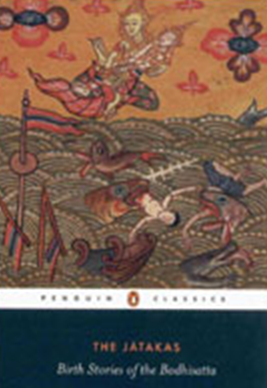Jatak(a) Tales
This is a collection of articles archived for the excellence of their content. Readers will be able to edit existing articles and post new articles directly |
Jataka
From the past
Reviewed By Noor Jehan Mecklai
A Jataka, says the author, is a story about a birth, and this truly charming and highly didactic collection of tales is based on the repeated births — and deaths — of the bodhisattva, the being destined finally to become Gautama Buddha. Sarah Shaw has presented to us 26 stories from a collection of 547, originally written in Pali and forming one of the largest collections of such narratives in the world.
They all spring from the bodhisattva’s vow to Dipankara (the previous incarnation of Buddha) to postpone his own enlightenment until he himself was ready for Buddhahood and able to teach others. So it is his constant striving in this way that presents the basis of the Jataka stories.
The earlier tales are far simpler and shorter than the later ones, and the earliest contain no verses, while ‘The Story of Temiya, the Dumb Cripple’ being one of the last 10 stories, includes 120 verses and covers 44 pages including notes. The last 10 lives of the Buddha are regarded as particularly significant and are associated with the completion of each one of the 10 perfections. These are generosity, virtue or restraint, renunciation, wisdom, effort, forbearance, truthfulness, resolve and loving kindness. Owning to the constraints of publication, the author has opted for a short collection representing a variety of stories, at the same time wisely including a list of those based on each of the perfections.
The overall structure of the tales as exemplified in Jataka 37, ‘The Story of the Partridge’, or the Tittira Jataka, which teaches part of the virtuous code of conduct for the sangha, that is, for monks and nuns. The narrative proper starts with the paccuppannavatthu — the story from the present — which tells how certain senior monks going on a journey were unable to find lodgings because their disciples, who had arrived earlier at the designated place had taken up all available accommodation.
And it distressed the Buddha to find that even in his lifetime there was disrespect among the sangha; so after explaining how deference should be given on the basis of seniority, which is determined not necessarily according to age but to the length of time since ordination, he told the following story from the past.
A monkey, a partridge and an elephant lived beside a large banyan tree, and finding themselves gradually lacking in deference and common courtesy to one another, decided to see that the most senior of them received proper respect. The test lay in length of acquaintance with the tree.
Well, the elephant had known it since it was a bush and the monkey since it was a sapling. But the partridge explained, ‘Friends, at one time there was a very large banyan tree… (and) I ate (its) fruits and then expelled excrement over this spot. This tree grew from that. So I have known it from the time even before it existed. Therefore I am older than both of you.’ Thereupon the other two vowed immediately to show him ceremonial respect and to accept his teachings from then on. Thenceforth they all lived in mutual respect, ‘and at the end of their lives had their next rebirth in a heaven realm.’
After underlining this with specific teachings, the Buddha revealed that his two principal disciples, Moggallana and Sariputra, had been the elephant and the monkey respectively, while he himself had been the partridge. Such a declaration forms the signature tune of each Jataka, not to satisfy anyone’s ego, but possibly for the sake of clarity, since the same animal, king, or whatever does not always represent the same person. Here the monkey is Sariputra, while in Jataka 407 the monkey king is none other than the Buddha himself.
Most of us, while accepting that the Buddha had to evolve over aeons, could never imagine him going through a large number of animal forms before taking his first human rebirth. What’s more, on reading the story of ‘Temiya, the Dumb Cripple’, we are very likely to ask why he had to suffer in hell for 20,000 years, and what time system produced this calculation, since time in the spiritual world does not equal time on terra firma. Well briefly, he had to demonstrate that we too can eventually receive enlightenment in spite of all vicissitudes relevant to the karma we generate along the way, if we practice the 10 perfections at least.
There are many lessons to learn from the trials and triumphs of Temiya. The two perfections illustrated here are renunciation and resolve. He renounced a kingdom, having risen above all kinds of degradation; and both at this point and at several others in the tale, the Buddha’s discourse is tremendous. One of the basic lessons here is that kingship ‘is presented as unequivocally damaging, certainly to oneself,’ and often to others. Note carefully the thoughts of Temiya as he strives upwards.
The danger inherent in kingship is certainly a relevant thought in today’s world, and reading these 26 colourful Jatakas one may learn much assisted by Sarah Shaw’s extremely scholarly and sincere analysis of the stories in general.
The Jatakas Translated By Sarah Shaw Penguin Books ISBN 978-0-14400-147-0 339 pp.
